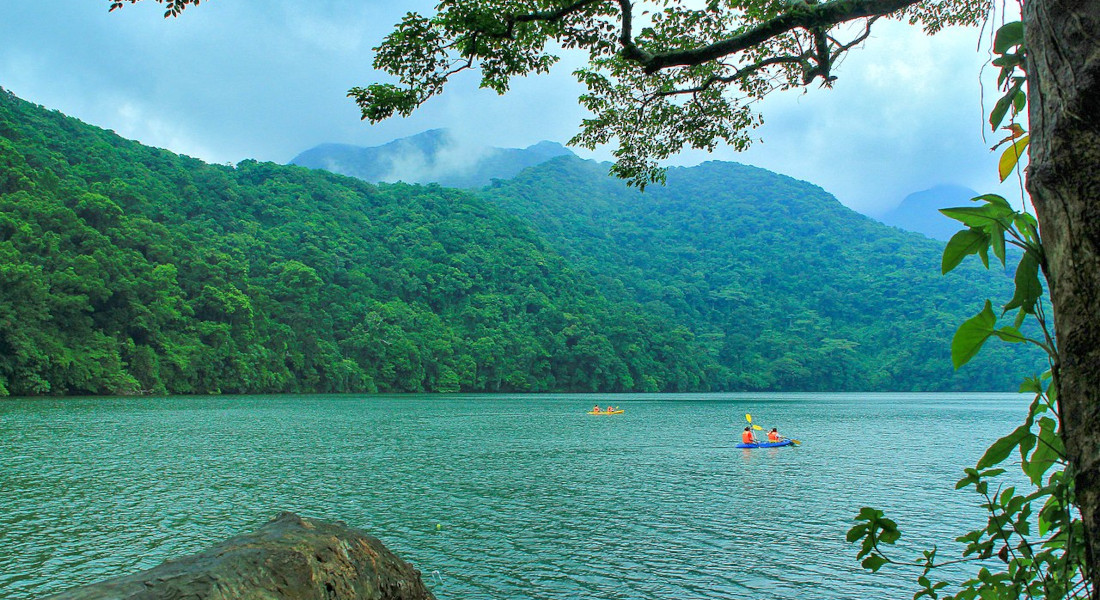Dramatic Shift in Tropical Pacific Climate during the Little Ice Age
A new study led by Assistant Professor Ana Prohaska from the Centre of GeoGenetics and Group Leader Dirk Sachse from the German Research Centre for Geosciences, identifies an abrupt shift to El Niño-like conditions in the tropical Pacific during the Little Ice Age. The team’s findings are published in Communications Earth and Environment.

We are officially in an El Niño event. This climate phenomenon arising from the tropical Pacific is poised to influence global weather over the next year and lead to various weather extremes. El Niño typically occurs with intervals of a few years and lasts for 9-12 months. However, El Niño-like conditions can arise and persist over much longer periods, spanning decades or even centuries. A study conducted by an international team of researchers reveals that El Niño-like conditions have occurred in the recent past. They discovered evidence of a particularly dry period in the Philippines during the Little Ice Age (1600-1900 A.D.), using lipid biomarkers retrieved from lake sediments. These findings underscore the importance of understanding past dynamics of the Pacific ocean-atmosphere system for enhancing climate models and forecasting future climate changes.
The El Niño Phenomenon
One notable aspect of the tropical Pacific climate is the temperature difference between its eastern and western halves, where warmer surface waters typically exist in the west, and colder ones in the east. However, this pattern breaks down during an event known as El Niño, which happens irregularly every few years and can last for 9-12 months. During El Niño, the sea temperatures along the equator rise from the coast of Peru to the central Pacific. As a result, atmospheric convection shifts from its usual location in the western equatorial Pacific to the central equatorial Pacific. This shift causes changes to weather patterns around the globe, bringing with it a range of climatic extremes such as droughts, floods, and wildfires, profoundly affecting people’s lives worldwide. With the ongoing global warming, the impacts of El Niño are projected be become even more severe.
El Niño-like Conditions Over Extended Periods
While El Niño is an interannual short-term event, the tropical Pacific’s climate system can also display El Niño-like patterns over much longer durations, from decades to centuries. This phenomenon is related to more persistent changes in the sea surface temperature gradient from the eastern to the western Pacific. The new study provides evidence of such behaviour in the recent past.
Understanding Past Climates through Analysis of Sediment Cores
The team of researchers carried out an analysis of sediment cores retrieved in 2013 from Lake Bulusan, located in the northern Philippines. These sediments offer a unique window into the region’s climate dynamics over the past 1,400 years, which is presently predominately influenced by El Niño occurrences. Specifically, the team investigated the composition of stable hydrogen isotopes in leaf wax biomarkers, or δDwax. These molecular fossils, derived from the protective layer of leaves of vascular plants, provide valuable insights into the water availability during a plant’s lifetime.
Onset of Pronounced Dry Period during the Little Ice Age
The study reveals an abrupt and marked rise in δDwax values between 1600 and 1650 A.D., suggesting a shift towards drier conditions in the western tropical Pacific during the latter half of the Little Ice Age. This change is attributed to a shift in the mean state conditions of the tropical Pacific climate, specifically a reduction in east-west gradient of sea surface temperatures, similar to what occurs during El Niño conditions today. Intriguingly, this dramatic climatic transition took place within just one generation and the changed conditions persisted for over two centuries.
Implications for Future Climate Predictions
Lead researcher Ana Prohaska emphasizes the significance of this study, stating: "Our research demonstrates the intricate interplay between sea surface temperature variations and rainfall patterns in the tropical Pacific. Gaining a deeper understanding of the past changes in the mean state of the tropical Pacific and the occurrences of prolonged El Niño-like conditions is critical to predicting future climate change and its potential impacts on this vulnerable region."
Dirk Sachse adds: "While evidence for sudden climatic shifts in the past is growing, current climate models struggle to replicate such swift changes in the mean state of the tropical Pacific, underscoring our still limited understanding of the mechanisms involved. Integrating paleoclimatological data into contemporary climate models is vital for improving predictions of the complex dynamics of tropical Pacific climate system in a warming world.”
Read more about the publication here.
*Text contains material from the press release of the German Research Centre for Geosciences prepared for this publication.
